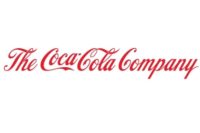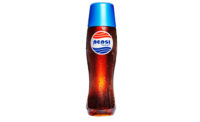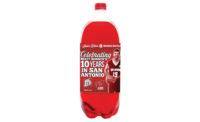Although the carbonated soft drink (CSD) market remains one of the leading categories when it comes to dollar sales, it has faced several challenges within the past few years. According to data from Chicago-based Euromonitor International, the CSD category reached $36.8 billion in dollar sales in 2014. This is down from the $39.2 billion the category experienced in 2012, it reported.
According to Howard Telford, senior industry analyst of beverage for Euromonitor, retail sales of CSDs were down 3 percent in both volume and dollar sales in 2013-2014 in the United States.
Lauren Masotti, client manager of U.S. beverages for Kantar, New York, noted in the April issue of Beverage Industry that the declines for CSD penetration have been gradual during the past 20 years. However, it seems as though regular CSD declines have plateaued while diet soft drinks still are experiencing gradual declines.
Yet, she added that innovations like smaller portion sizes allow consumers to enjoy the indulgence associated with CSDs but in more controlled occasion. “You still feel good with the treat because it’s smaller and you’re limiting and budgeting your calories and intake of soda,” she said.
For example, The Coca-Cola Co., Dr Pepper Snapple Group (DPS) and PepsiCo Inc. all offer a variety of brands in 7.5-ounce mini cans. Purchase, N.Y.-based PepsiCo Inc. expanded its mini can portfolio last year with its Pepsi Made With Real Sugar release. The company also temporarily offered this size for Pepsi Wild Cherry Made With Real Sugar and Pepsi Vanilla Made With Real Sugar
Another way beverage-makers are exploring the mid-calorie segment is through natural sweetener combinations. For example, Atlanta-based The Coca-Cola Co.’s Coca-Cola Life, which expanded to national distribution in late 2014, and PepsiCo’s Pepsi True, which launched last year on Amazon, are both made with a blend of cane sugar and stevia leaf extract.
“The implementation of stevia in Coca-Cola Life and Pepsi True represent an attempt to bring stevia as an ingredient into mainstream CSDs,” Euromonitor’s Telford said. “It’s too early to tell if this will remain a niche segment or a real transformation of low-calorie products.”
Although mass-produced CSDs have experienced some challenges within the past few years, some smaller craft-like and all-natural CSD brands have begun to resonate with consumers. For example, Fortune reported in a June 2014 article that Culver City, Calif.-based Zevia had sales of $90 million in the last 12 months. Zevia’s CSD varieties are all sweetened with stevia and monk fruit, resulting in a zero-calorie product.
Kantar’s Masotti said that the craft soda market is mirroring the craft beer effect because it is giving consumers something different and trendy beyond traditional soft drinks. Although she isn’t certain of its impact, she said “they’ll be keeping an eye out on how those perform.”
Major players within the craft soda market also are offering innovations to appeal to consumers. In late 2014, New York-based GuS – Grown-up Soda added a new Blackberry variety to its line of craft sodas. GuS Dry Blackberry is lightly sweetened with cane sugar and contains 35 percent fewer calories than an average full-calorie soda, the company says. A 12-ounce bottle contains 95 calories and is gluten free, caffeine free, kosher and vegan.
Beyond flavor expansions, craft soda brands are releasing variety packs to encourage experimentation. Inspired by the popularity of variety packs in the craft beer segment, Seattle-based Dry Soda Co. launched its Summer Discovery Pack mixed pack of its three best-selling natural soda flavors last year. Dry Soda’s variety pack consists of 12, 12-ounce slim cans featuring four cans each of the brand’s three popular flavors.
Even with new product and packaging innovations, industry analysts still are bearish about the CSD category’s future. Chicago-based Mintel anticipates declines through 2019; however, the market research firm says brand owners should embrace functional and marketing tactics to mitigate this prediction. Euromonitor’s Telford said in previous reporting that the market research firm is forecasting a 2 percent decline in volume sales for the category in 2014 and 2015 timeframe, with dollar sales flat.
“Over 2014-19, we are expecting a negative 1 percent [compound annual growth rate] (CAGR) overall but a positive 1 percent CAGR in value sales as the industry adjusts to a lower volume environment through better-for-you innovations, higher unit prices and an emphasis on single-serve packaging,” he said.




